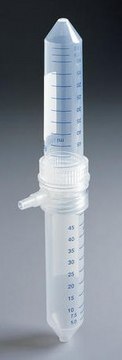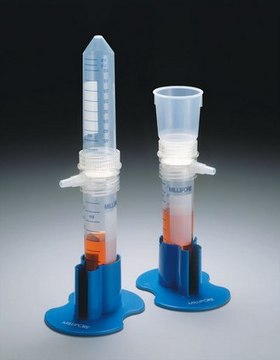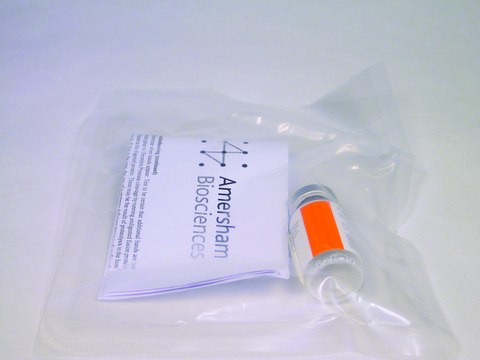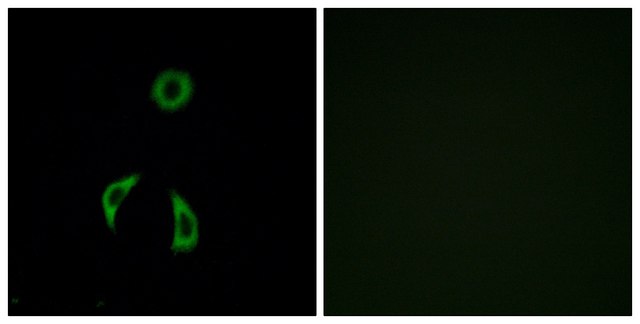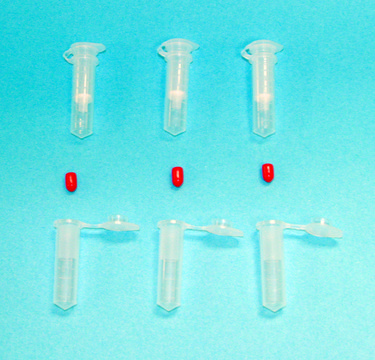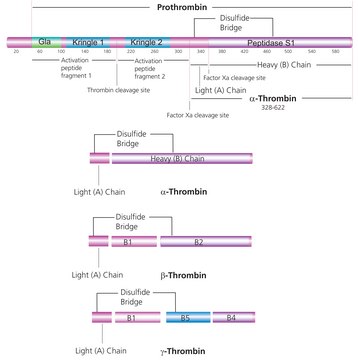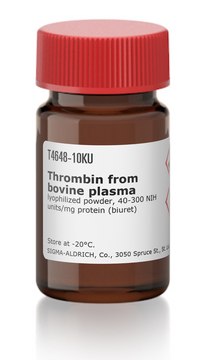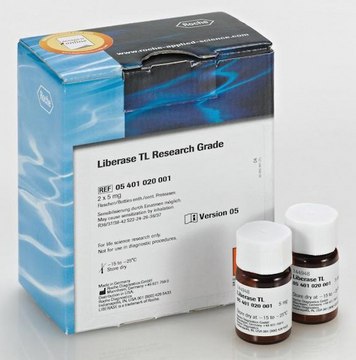MAB1810
Anti-ADAMTS-1 Antibody, clone 5D4E11B6
serum, clone 5D4E11B6, Chemicon®
Sign Into View Organizational & Contract Pricing
All Photos(3)
Synonym(s):
METH-1
UNSPSC Code:
12352203
eCl@ss:
32160702
NACRES:
NA.41
Recommended Products
biological source
mouse
Quality Level
antibody form
serum
antibody product type
primary antibodies
clone
5D4E11B6, monoclonal
species reactivity
human, mouse, rat
manufacturer/tradename
Chemicon®
technique(s)
ELISA: suitable
immunoprecipitation (IP): suitable
western blot: suitable
isotype
IgG
NCBI accession no.
UniProt accession no.
shipped in
dry ice
target post-translational modification
unmodified
Gene Information
human ... ADAMTS1(9510)
General description
ADAMTS-1 is a member of a family of extracellular proteases known as ADAMTS (a disintegrin and metalloprotease with thrombospondin motifs). Members of the ADAMTS family share distinct protein modules, including a propeptide region, a metalloproteinase domain, a disintegrin-like domain, and a thrombospondin type 1 (TSP) motif. Individual members of this family differ in the number of C-terminal TSP motifs, and some have unique C-terminal domains. The protein encoded by this gene contains two disintegrin loops and three C-terminal TSP motifs. ADAMTS-1 cleaves aggrecan, a cartilage proteoglycan and appears to demonstrate angiogenesis inhibitory activity. The maturation of ADAMTS-1 requires two independent and sequential processing events that may release two forms of the protein. With the cleavage of the prodomain from the 110 kDa zymogen, an 87 kDa active form remains which can be further processed by removal of the catalytic subunit from the TSP repeats, leaving the C-termianl 65 kDa soluble form. The proteolytic deletion of the last two TSP repeats, is probably significant for the in vivo function of this protein.
Specificity
Clone 5D4E11B6 recognizes human ADAMTS-1.
Reactivity with other species has not been tested.
Immunogen
Myc-His carboxyl tagged full-length recombinant protein based on the human sequence.
Application
Detect ADAMTS-1 using this Anti-ADAMTS-1 Antibody, clone 5D4E11B6 validated for use in ELISA, IP & WB.
Western blot: 1:2000 - 1:4000 dilution on A431 cell lysate
Note: MW bands detected vary by cell line or sample with detection of zymogen and/or active forms.
Immunoprecipitation: confirm by immunoblot using clone 5D4E11B6; 1:50 using clone 5C6D5 (Catalog # MAB1771) to immunoprecipitate ADAMTS-1 from 500 µg of HEK293 whole cell lysate or PC-12 whole cell lysate
Note: MW bands detected vary by cell line or sample with detection of zymogen and/or active forms.
Immunoprecipitation: confirm by immunoblot using clone 5D4E11B6; 1:50 using clone 5C6D5 (Catalog # MAB1771) to immunoprecipitate ADAMTS-1 from 500 µg of HEK293 whole cell lysate or PC-12 whole cell lysate
Target description
110 / 87 / 65 kDa
Physical form
Ascites. Liquid containing 0.05% NaN3.
Analysis Note
Control
A431 cell lysate
HEK293 cell lysate
PC-12 cell lysate
Embryonic mouse brain lysate
MCF-7 cell lysate
A431 cell lysate
HEK293 cell lysate
PC-12 cell lysate
Embryonic mouse brain lysate
MCF-7 cell lysate
Legal Information
CHEMICON is a registered trademark of Merck KGaA, Darmstadt, Germany
WGK
nwg
Flash Point(F)
Not applicable
Flash Point(C)
Not applicable
Certificates of Analysis (COA)
Search for Certificates of Analysis (COA) by entering the products Lot/Batch Number. Lot and Batch Numbers can be found on a product’s label following the words ‘Lot’ or ‘Batch’.
Already Own This Product?
Find documentation for the products that you have recently purchased in the Document Library.
Tie-Gang Meng et al.
Cell death & disease, 8(6), e2846-e2846 (2017-06-02)
The process of follicular development involves communications between oocyte and surrounding granulosa cells. FURIN is a member of the family of proprotein convertases that is involved in the activation of a large number of zymogens and proproteins by cleavage at
Yunjie Qiu et al.
Frontiers in aging neuroscience, 14, 896522-896522 (2022-08-27)
Amyloid-β (Aβ) derived from amyloid precursor protein (APP) hydrolysis is acknowledged as the predominant hallmark of Alzheimer's disease (AD) that especially correlates to genetics and daily activities. In 2019, meta-analysis of AD has discovered five new risk loci among which
Suély V Silva et al.
PloS one, 11(10), e0165061-e0165061 (2016-10-21)
Proteins secreted in the extracellular matrix microenvironment (ECM) by tumor cells are involved in cell adhesion, motility, intercellular communication and invasion. The tumor microenvironment is expansively modified and remodeled by proteases, resulting in important changes in both cell-cell and cell-ECM
Maíra de Assis Lima et al.
Cellular signalling, 77, 109827-109827 (2020-11-09)
ADAMTSs (A Disintegrin And Metalloproteinase with ThromboSpondin motifs) are secreted proteases dependent on Zn2+/Ca2+, involved in physiological and pathological processes and are part of the extracellular matrix (ECM). Here, we investigated if ADAMTS-1 is required for invasion and migration of
Our team of scientists has experience in all areas of research including Life Science, Material Science, Chemical Synthesis, Chromatography, Analytical and many others.
Contact Technical Service